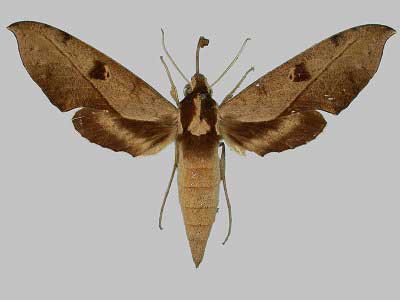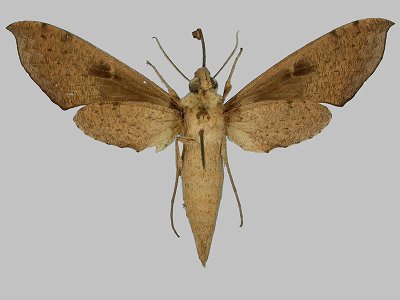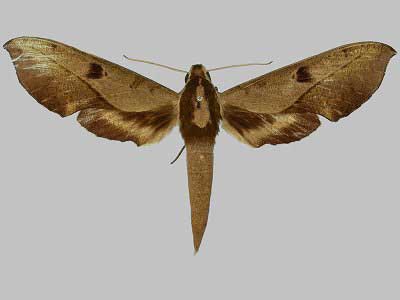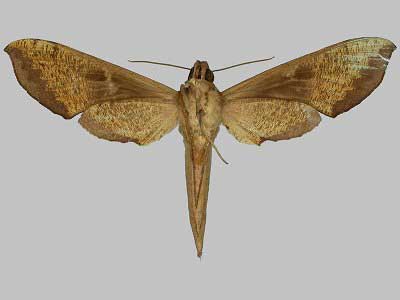Xylophanes obscurus
Xylophanes obscurus
Rothschild & Jordan, 1910

Xylophanes obscurus male, Peru, CATE.
This site has been created by
Bill Oehlke at oehlkew@islandtelecom.com
Comments, suggestions and/or additional information are welcomed by Bill.
TAXONOMY:
Family: Sphingidae, Latreille, 1802
Subfamily: Macroglossinae, Harris, 1839
Tribe: Macroglossini, Harris, 1839
Genus: Xylophanes Hubner [1819] ...........
Species: cosmius obscurus Rothschild & Jordan, 1910
|
MIDI MUSIC
.....It's a Wonderful World.....
copyright C. Odenkirk
ON.OFF
<bgsound src="world.mid" LOOP=FOREVER>
|
DISTRIBUTION:
Xylophanes obscurus
(forewing length = ?? mm) fly in
Peru and
Brazil.
This moth,
formerly Xylophanes cosmius obscurus, has been elevated to full species status
as Xylophanes obscurus by Kitching and Cadiou, 2000.
Obscurus has a convex forewing median band, reaching the costa before the apex.
There are no black and white checkered fringes on the forewing and
basic colour is darker, more uniform and repressed than in nominate cosmius.
"Most similar to Xylophanes cosmius but outer edge of forewing entire.
Forewing upperside darker, more uniform and sombre brown (Xylophanes cosmius is a greenish moth); dark patch distal to discal spot
larger than in Xylophanes cosmius, trapezoidal; conspicuous postmedian line straight or slightly convex, reaching costa before the apex
(in Xylophanes cosmius and Xylophanes epaphus, this line is concave and runs out to the apex); fringes not chequered." CATE

Xylophanes obscurus male (verso), Peru, CATE.
FLIGHT TIMES:
Xylophanes obscurus adults
probably fly as at least three broods.
ECLOSION:
Pupae probably wiggle to surface from subterranean chambers just prior to eclosion.

Xylophanes obscurus, female, Brazil: Rio Madeira, below S. Antonio, Allianca, CATE

Xylophanes obscurus, female (verso) Brazil: Rio Madeira, below S. Antonio, Allianca, CATE
SCENTING AND MATING:Females call in the males with a pheromone released from a gland at the tip of the
abdomen.
EGGS, LARVAE, PUPAE:
Larvae probably feed on
plants in the Rubiaceae family and Malvaceae families.
Moths emerge approximately one-two months after larvae pupate.
Use your browser "Back" button to return to the previous page.
Goto Main Sphingidae Index
Goto Macroglossini Tribe
Goto Central American Indices
Goto Carribean Islands
Goto South American Indices
Goto U.S.A. tables



